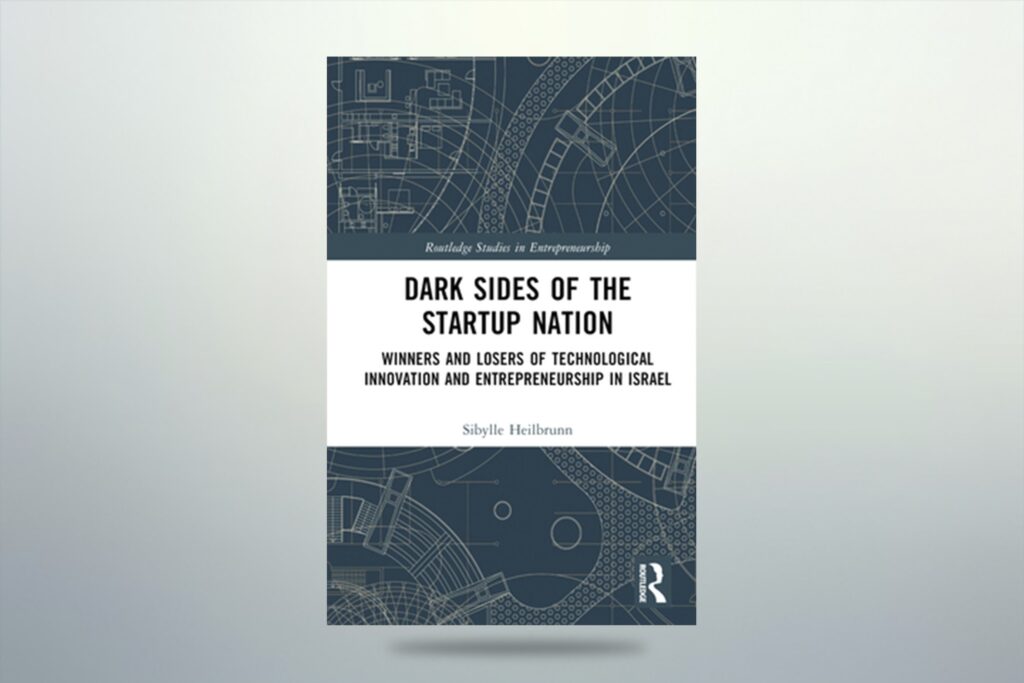Since the release of Start-Up Nation: The Story of Israel’s Economic Miracle by Dan Senor and Saul Singer, Israel’s approach to transforming its economy has many small countries aspiring to becoming the next “idea factory”, where startups are revered as the growth engine. The figures speak for themselves: In 2023, the high-tech sector accounted for nearly 20 per cent of Israel’s GDP, employing nearly 12 per cent of the country’s workforce. A recent report by Rise, an Israeli think-tank, reveals that tech startups showed signs of resilience despite the conflict sparked by Hamas 7 October attacks. Notably, the second quarter of 2024 witnessed a significant uptick in total investment, compared to the first.
However, a new book, Dark Sides of the Startup Nation, offers another perspective, by challenging this celebratory discourse. The author, Sibylle Heilbrunn, Professor of Organisational Sociology and Dean of the Faculty of Social Sciences and Humanities at Kinneret Academic College on the Sea of Galilee, argues that persistent social hierarchies and structural barriers within the high-tech industry have resulted in a zero-sum game with clear winners and losers in the sector. This divide, she writes, is not just economic, but also geographic, with benefits largely confined to Tel Aviv, leaving peripheral regions and marginalised groups in a state of increasing “otherness”.
Prof Heilbrunn’s research triangulates neatly with the 2023 annual report by the Israel Innovation Authority: The high-tech sector has emerged as the largest contributor to Israeli exports, and has seen significant increases in salaries and employment. Yet, diversity remains low, with only 2 per cent of employees in the sector coming from the Arab community, and 2.2 per cent from the Ultra-Orthodox community.
The book begins by contextualising Israel’s high-tech industry within a neo-liberal framework, exposing “the problematic and sometimes contradictory myth that entrepreneurship is meritocratic”. Prof Heilbrunn uses vivid examples to illustrate the unique institutional and social struggles of six distinct groups in the high-tech sector — the Ethiopian community, kibbutz members, immigrants from the former Soviet Union, the Ultra-Orthodox community, Arab-Palestinian Israelis, and women — contrasting them with the more privileged access to high-tech employment opportunities enjoyed by “white Jewish men (mostly Ashkenazi), belonging to a family with a well-off socioeconomic background”.
One such example, she writes, is that of “Ahmed”, an Arab Palestinian from a city near Tel Aviv. Despite impressive academic achievements at the Technion and Tel Aviv University, he had problems landing a job in high-tech because of his ethnicity and the fact that he did not serve in the military, a key gateway into the sector. It was only through a professor’s recommendation that “Ahmed” managed to secure a position at a multinational company, which eventually led him to establish his own successful firm.
Prof Heilbrunn highlights the resilience of such self-made entrepreneurs of the so-called marginalised groups in criticising the high-tech sector’s exclusivity. Whether it is entrepreneurs from kibbutzim who have applied their historical expertise in agriculture, former Soviet citizens who have embedded themselves into the broader entrepreneurial ecosystem, or Ethiopian immigrants who have initiated their own ventures in tackling systemic racism, the writer details how these “others” have found ways to navigate barriers peculiar to their situation.
However, the reality appears to be more a matter of choice than circumstance. For instance, the Ultra-Orthodox Jewish community’s isolation from the high-tech sector and the broader Israeli economy is largely a result of chosen detachment, driven by religious and cultural preferences, rather than a systemic failure of the industry to level the playing field, or a “lack of moral concern” for those on the periphery.
In an effort to address this contradiction, Prof Heilbrunn uses the example of various well-meaning government and NGO-led programmes, which have sought to increase high-tech industry participation from peripheral groups and regions with little success. She cites the experiment to turn the southern city of Be’er Sheva into a high-tech hub: While government funding helped turn it into a centre of sorts for cybersecurity start-ups, its inability to retain talent and lagging infrastructure development have kept it well behind Tel Aviv.
Ultimately, however, Heilbrunn does not quite get to the root of the issue. The reader is left to guess what the real factors behind the “divide between Tel Aviv and all the rest” are.
The dichotomy presented by the author’s relentless portrayal of an exclusive environment, and her liberal use of examples proving that those who want to succeed, can, is the crux of the matter. Rather than “challenging the meritocracy myth”, she would be better served by delving into the agency exercised by the so-called “marginal” groups. For a start, the definitions of “winners” and “losers” need to be re-examined.
Image: Sibylle Heilbrunn





